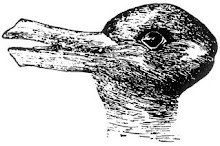18/7/2007 (Wednesday)
The feeling of guilt creeps into my heart during this second lecture as I do not turn up as punctual as usual due to the streamyx installation problem at my rented house, which has taken up much of my time than I have expected (sign L ~ ). Anyway, I manage to make it before the lesson started, luckily.
The feeling of guilt creeps into my heart during this second lecture as I do not turn up as punctual as usual due to the streamyx installation problem at my rented house, which has taken up much of my time than I have expected (sign L ~ ). Anyway, I manage to make it before the lesson started, luckily.
Moving into the second lesson, our professor Maznah does not appear since she is up with something else, I guess. Well, between Ms. Chin and Mr. Shahril, the facilitators who have taken over the lecture, I have eventually attended the latter’s lecture—a lecture on power point design and presentational skill. Perhaps the objective for the lecture is to see to what extend we have commanded the technological skill in designing the power point slides. However, shy to say, I still have a long way to go before being able to be really techno savvy (sign again).
Throughout the three hour lecture, I have gained, though not much, but useful information in designing power point presentation. I have learnt that it is very important for a message or an idea to be clearly and successfully transmitted to the intended target in order for our communication purpose to achieve. This is because during our presentation, Mr. Shahril has stressed on this point by pointing out the fact that a dark, especially a black background for power point presentation will enable the information that we are going to convey to stick out if compared to a graphical background. Moreover, he has also brought out the pertinent point of not over loading a slide with too many words and information. This will reduce the concentration of the audience. Frankly, I have already know about this point, however it just happens that I am too eager to convey all the important information and resulted in a fully written slide. Ironically, this seems to bring an opposite feedback where it will make my audience tired and sways their attention away, especially if dealing with young learners, since according to Biehler, R. F. and Snowman, J. (1990), they have a rather short attention span compared to adult learners. Hence, I think I should really reflect on this.
Nevertheless, there is one thing that I ponder, is not soft skill an important aspect in our learning now? Why there is no sign of stressing this skill during our power point presentational process? I wonder as during the group presentation, I observe that some groups only have a person to do all the presentation, while the others are just standing aside. Where goes the group dynamic and group spirit? I have noticed this and I do write down some comments on this for certain groups in the peer appraisal form. Nonetheless, this point is not being publicly raised by anyone. Perhaps, the lesson is to just solely observe our skill in designing power point slides and give feedback on it. If this is the case, then I would say the objective for this lecture has totally, completely and absolutely achieved. Still, in my opinion, looking at the increasing importance of integrating soft skills in our learning process, perhaps some attention should be spent on this aspect during our presentation. (This is just merely my own point of view, are there other opinions? Well, you are most welcome!)
Anyway, above all, it is an interesting lecture as it requires us to prepare a power point presentation and from our own experience of doing so, bring out the pertinent and relevant point in better designing a power point presentation so to enhance our teaching-learing process in the Primary Classroom. What a wonderful hands-on activity to be adopted since it helps me to better understand and link well to what I have learnt from Mr. Shahril on a better and more persuasive power point designing skill. Thanks to Mr. Shahril!




















